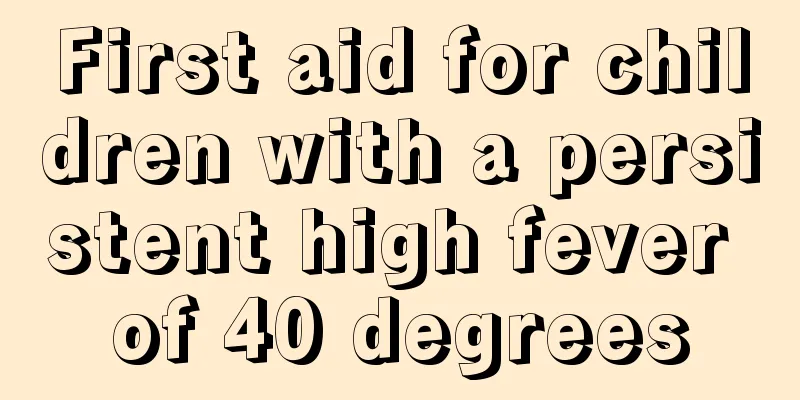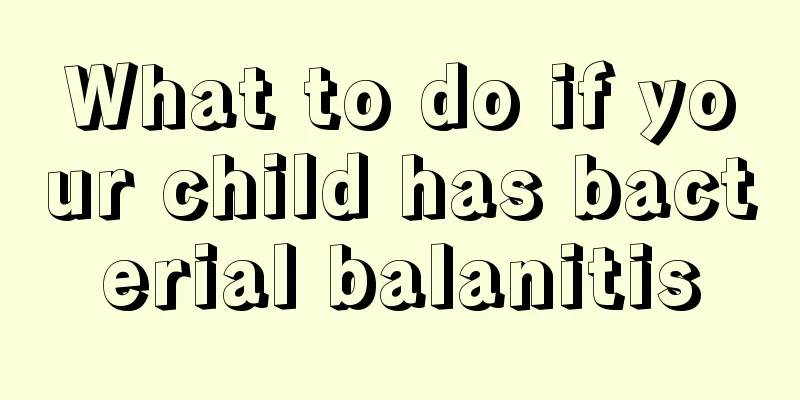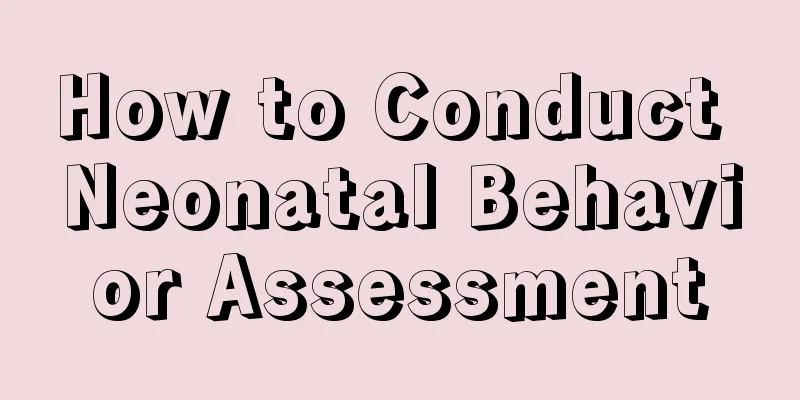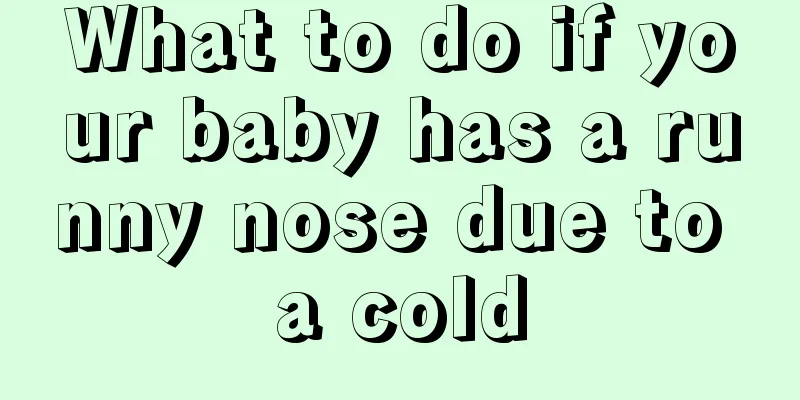First aid for children with a persistent high fever of 40 degrees

|
If a child's fever reaches 40 degrees, it is a very dangerous situation. Because children's resistance is relatively weak and their body functions have not yet fully developed, if they continue to have a high fever and do not receive care, their brain development is likely to be affected. So, if a child has a high fever of 40 degrees and it won't go away, what methods should be used for first aid? The following will give you a detailed introduction. 1. What is the reason for the child's high fever? 1. Cold Both common cold and influenza are the most common diseases in babies. Both bacterial and viral infections are possible. The symptoms vary, including fever, loss of appetite, gastrointestinal discomfort, diarrhea, and ear, nose and throat problems. The doctor will give you "symptomatic treatment" drugs, and if you want to rest more and drink plenty of water, you will usually recover in 3 to 5 days. However, if not properly cared for, complications such as otitis media, encephalitis, meningitis, etc. may occur, and there is a risk of a high fever of over 39 degrees. 2. Ear, nose and throat inflammation Ear, nose and throat problems usually cause inflammation, which leads to redness and swelling. It is a viral infection. Symptoms vary, common ones include fever, cough, runny nose, red and swollen throat (babies are usually unwilling to eat), etc. The doctor will give you "symptomatic treatment" drugs, and if you want to rest more and drink plenty of water, you will usually recover in 3 to 5 days. The disease is prone to complications such as otitis media, atopic otitis, pneumonia, etc., and there is also a risk of high fever above 39 degrees. 3. Roseola It is named after the roseola virus infection. Babies around 1 year old are most likely to get it. The typical symptom is an unexplained high fever (above 39 degrees Celsius) that lasts about 3 to 4 days, followed by a rash (the fever will subside at this time). The rash usually disappears slowly without leaving any scars or other complications, so parents do not need to worry. 4. Get vaccinated Many babies have mild fevers due to vaccinations, but more obvious fevers usually occur after the injection of "diphtheria, whooping cough, and tetanus" vaccines. If you are unwell or have a cold, it is not suitable to take your baby for vaccination to avoid confusion about the symptoms. The observation period for fever caused by vaccination is 72 hours. If it exceeds this period, the fever is no longer caused by the vaccine, and parents need to make another judgment. 5. Sepsis It is a disease in which bacteria invade the bloodstream. It is usually the result of inbreeding, poor innate immunity, or use of high doses of steroids. Patients with sepsis have a 1/3 chance of developing meningitis, so it ranks second in risk. 6. Urinary tract infection The disease is most common in boys and girls under 1 year old. For baby girls, it is usually caused by feces or diapers; for baby boys, it is caused by bladder and ureteral reflux. Apart from the fact that the fever can easily reach above 38.5, it is not easy to detect from the outside. Because it is a bacterial infection, medical treatment usually includes antibiotics, which takes about 2 weeks to heal. Possible complications are impaired renal function and renal suppuration. 2. What should I do if my child has a high fever of 40 degrees and it doesn't go away? 1. When your child has a fever, remember not to let him/her wear too many clothes or cover him/her with too thick a blanket. 2. Drinking more water helps to sweat and dissipate heat. In addition, water has the function of regulating temperature, which can lower body temperature and replenish the water lost by the body. 3. Apply a cold towel to the forehead. After the towel becomes hot, soak it in cold water and apply it again. For older children, using a cold water bag or ice bag may be more effective. 4. Wipe your whole body with warm water or take a bath to dilate blood vessels in the skin and increase heat dissipation. 5. Alcohol bath: Add 70% alcohol to 1/1 tap water. The water temperature after dilution should be about 37℃-40℃. Put it in a small bowl. When giving a sponge bath, close the doors and windows, dip gauze or a soft towel in the alcohol in the bowl, and wipe the child's palms, soles of feet, armpits, inner sides of upper arms, and thighs, and then wipe the limbs and back. If the body temperature is above 39℃, medication should be taken under the guidance of a doctor. When the baby's body temperature exceeds 39℃ and is considered a high fever, Western medicine treatment is usually chosen. But one thing that must be made clear is that parents should use the medication under the guidance of a doctor, especially pay attention to the dosage, and send the baby to the hospital for treatment in time. It is particularly important to note that if a child has a fever for more than three consecutive days without improvement or if the baby has a high fever or convulsions, seek medical attention promptly, identify the cause and treat the symptoms. |
<<: Children with high fever have convulsions
>>: What to do if a child has a high fever of 40 degrees
Recommend
Is it normal for a newborn to breathe through the mouth?
Under normal circumstances, people breathe throug...
What to do if a child has a cold, fever, or cough
Children with colds and fevers must be taken seri...
Newborn baby diarrhea with milk curds
Since the digestive organs of newborns are not fu...
Is Down syndrome screening accurate?
In recent years, the accuracy of Down syndrome sc...
Can children eat tiger tail wheel?
The tiger wheel is a plant that is now also used ...
Is it good to wash your baby's hair every day?
Parents always don’t know how to take good care o...
Reasons why babies cry suddenly when they sleep at night
When the baby is still in the mother's belly,...
How long does it take for a baby to stand?
When you see your baby stand up for the first tim...
What causes sore eyes in children?
If a child has sore and swollen eyes, parents sho...
What is the reason why children often have leg pain?
People deal with some diseases to a greater or le...
What causes phlegm in children's throats?
Some children suffer from certain serious disease...
What foods are good for children's stomach and intestines?
The baby's stomach is not in good condition. ...
What is the normal body temperature for premature babies?
For newborns, due to different physical constitut...
What is the cause of the three-year-old baby's stomach pain?
Babies have various problems in life, and some of...
What should I do if my child can’t hold his urine?
Normally, many children have varying degrees of d...









